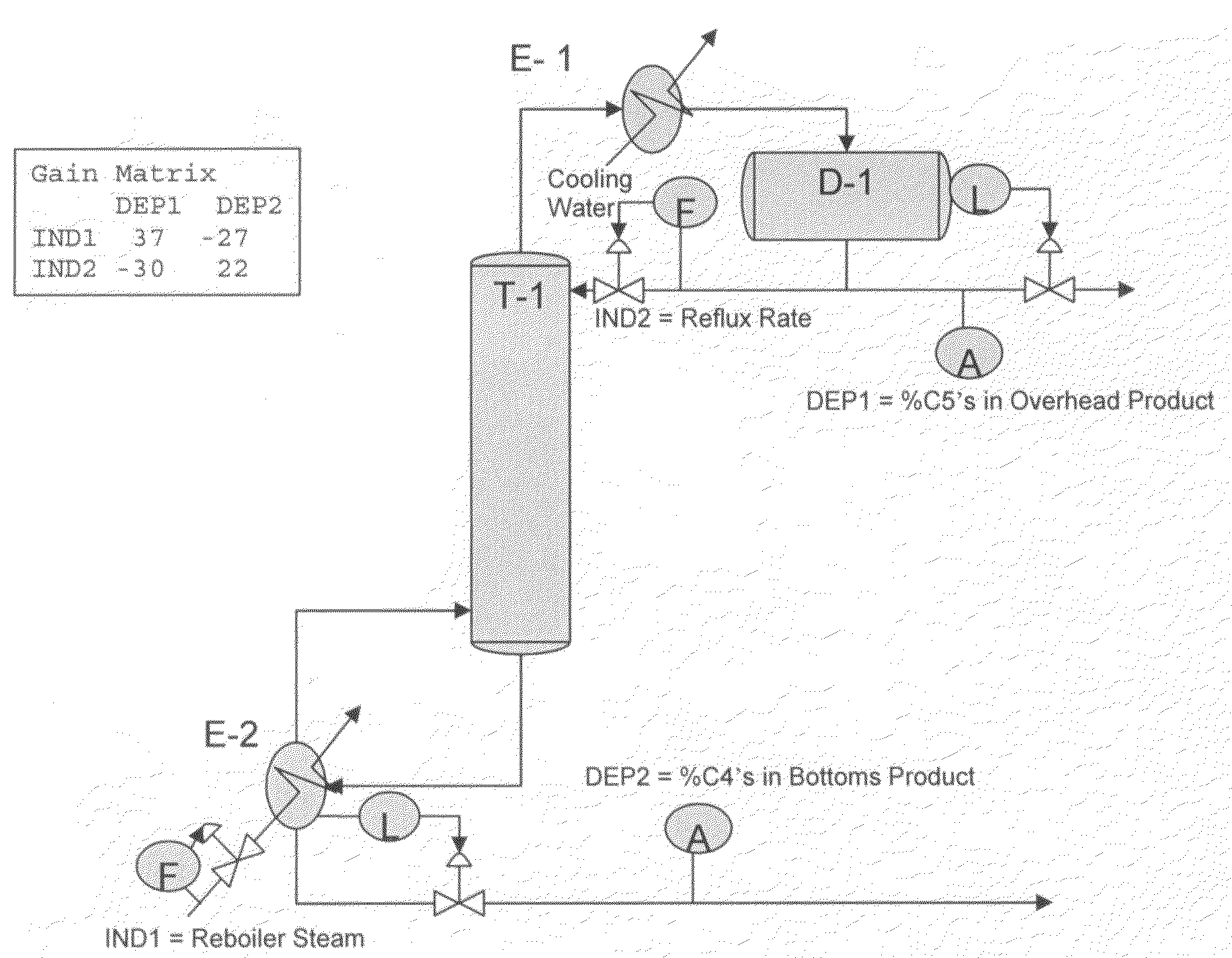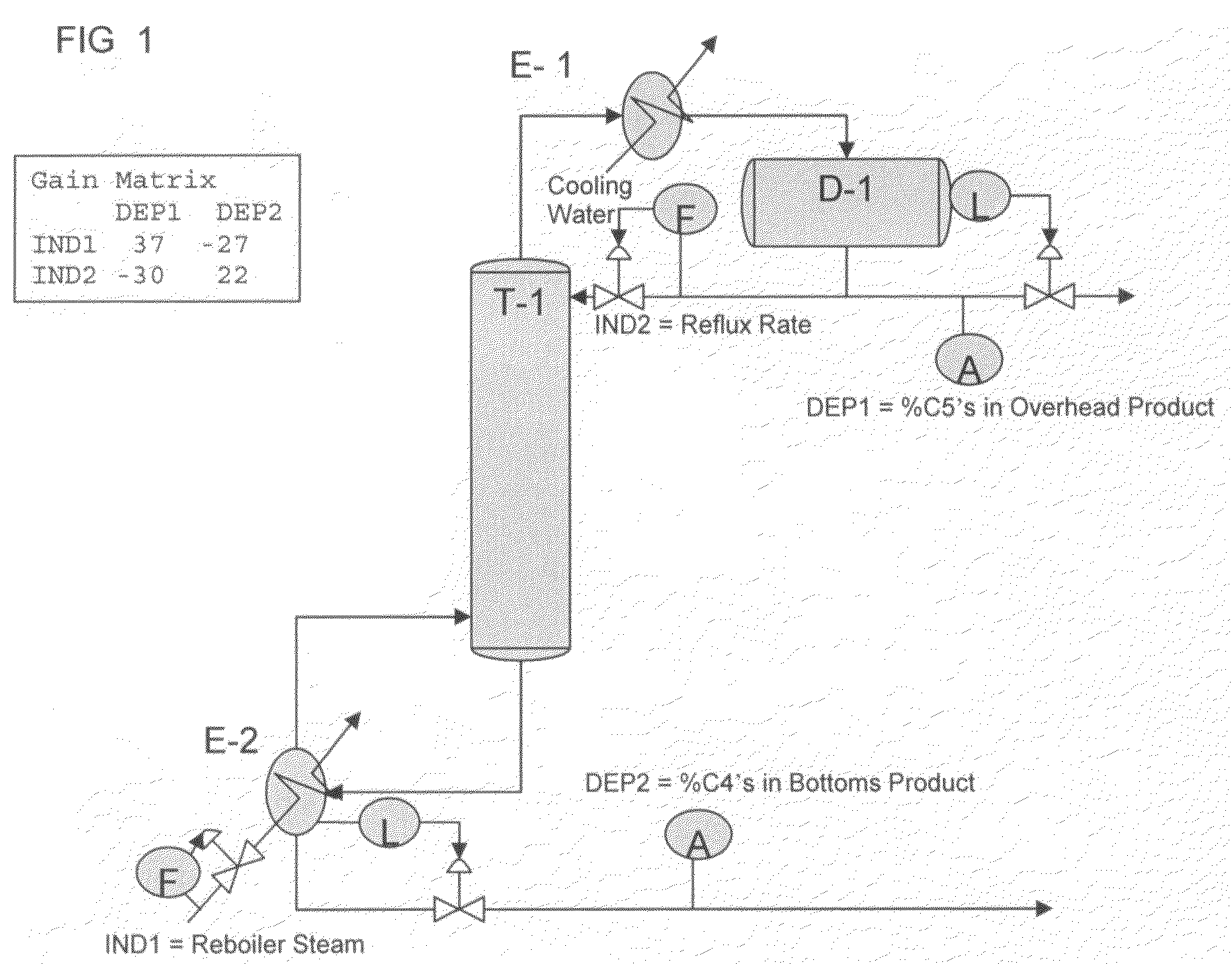Method for model gain matrix modification
a model gain and matrix technology, applied in the field of model predictive process control applications, can solve the problems of large differences in control/optimization solutions, current manual methods for model gain manipulation, and almost always some amount of uncertainty in the magnitude of individual model relationships, so as to improve rga properties, simplify the process of modifying a model matrix, and reduce the time required to modify each sub-matrix and the overall matrix.
- Summary
- Abstract
- Description
- Claims
- Application Information
AI Technical Summary
Benefits of technology
Problems solved by technology
Method used
Image
Examples
Embodiment Construction
[0019]A detailed description is demonstrated by an example problem. Consider a predictive model with 2 independent variables and 2 dependent variables. The gain matrix represents the interaction between both independent variables and both dependent variables. Table 1 shows an example of a 2×2 model prediction matrix.
[0020]A simple light ends distillation tower can be used as a process example for this problem. In this case, as shown in FIG. 1, IND1 is the reboiler steam input, IND2 is the reflux rate, DEP1 is the C5+(pentane and heavier) concentration in the overhead product stream, and DEP2 is the C4−(butane and lighter) concentration in the bottoms product stream. In this example problem, the relative effects on the two product qualities are very similar, from a gain ratio perspective, regardless of which independent variable is manipulated. When reboiler steam is increased, the C5's in the overhead increase, and the C4's in the bottoms product decrease. When the reflux rate is in...
PUM
 Login to View More
Login to View More Abstract
Description
Claims
Application Information
 Login to View More
Login to View More - R&D
- Intellectual Property
- Life Sciences
- Materials
- Tech Scout
- Unparalleled Data Quality
- Higher Quality Content
- 60% Fewer Hallucinations
Browse by: Latest US Patents, China's latest patents, Technical Efficacy Thesaurus, Application Domain, Technology Topic, Popular Technical Reports.
© 2025 PatSnap. All rights reserved.Legal|Privacy policy|Modern Slavery Act Transparency Statement|Sitemap|About US| Contact US: help@patsnap.com



